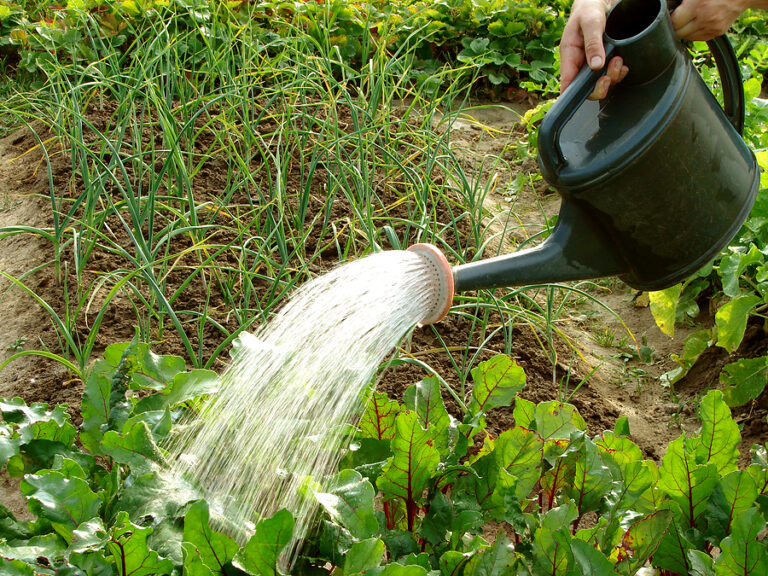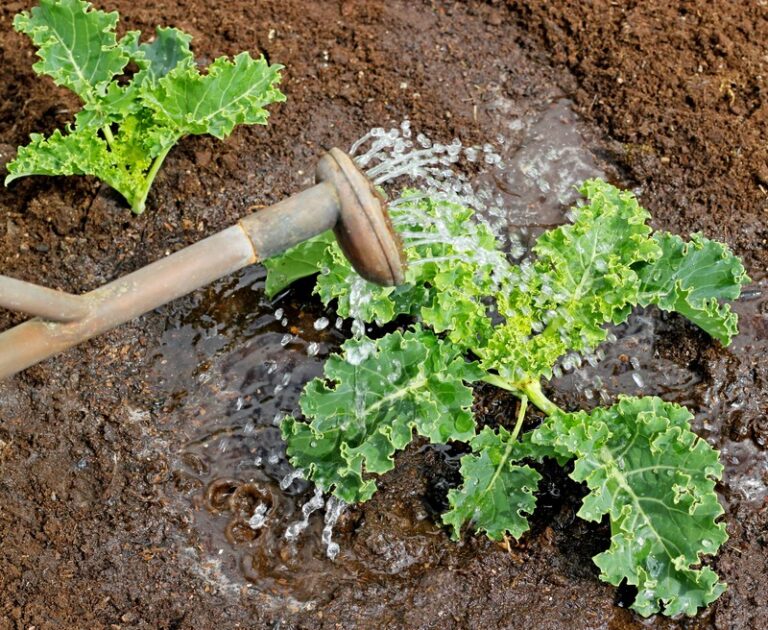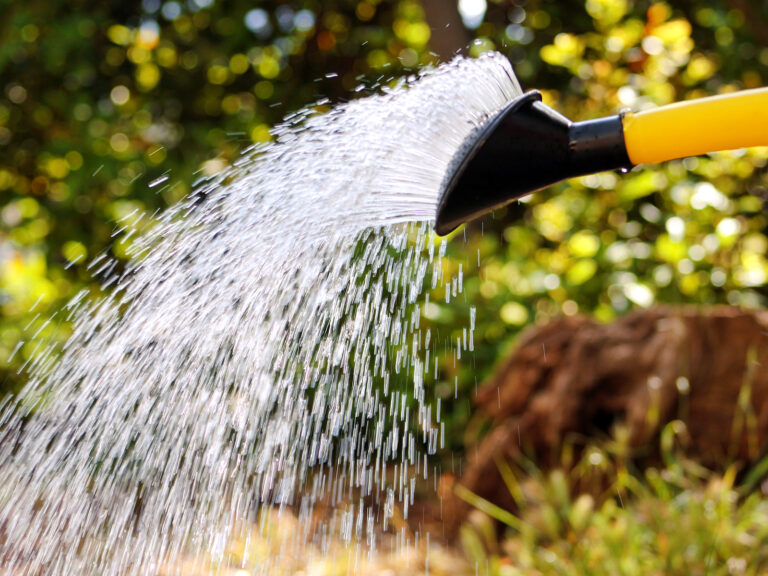How to Use Water Wisely: The Principles of Water-Wise Regenerative Gardening
Water is the lifeblood of any garden, yet in many regions, it’s a precious and limited resource. Water-wise regenerative gardening focuses on using water efficiently while improving soil health and plant resilience. By combining thoughtful irrigation, soil-building practices, and plant selection, you can grow thriving gardens while conserving this vital resource.
Why Water-Wise Gardening Matters
- Conserves Water: Reduces waste and lowers irrigation needs.
- Builds Healthy Soil: Well-watered, mulched soils support microbial life and store moisture.
- Reduces Plant Stress: Consistent water availability encourages strong roots and higher yields.
- Prevents Runoff & Erosion: Healthy soil absorbs water rather than letting it wash away.
- Supports Resilience: Plants are better prepared for drought and changing climate conditions.
Principles of Water-Wise Regenerative Gardening
- Improve Soil Structure:
- Add compost and mulch to increase water-holding capacity.
- Practice minimal tillage to preserve soil pores.
- Use Mulch Generously:
- Mulch keeps soil cool, reduces evaporation, and prevents erosion.
- Organic materials like straw, leaves, or wood chips are ideal.
- Plant Deep-Rooted and Drought-Resilient Plants:
- Deep roots access water stored deeper in the soil.
- Native or Mediterranean plants often need less irrigation.
- Employ Efficient Irrigation Techniques:
- Drip irrigation delivers water directly to roots, reducing waste.
- Water early in the morning or late in the evening to minimize evaporation.
- Practice Crop and Bed Design:
- Group plants with similar water needs together.
- Use raised beds or berms to improve drainage and prevent waterlogging.
- Capture and Reuse Water:
- Harvest rainwater from roofs and divert runoff into gardens.
- Use swales or small retention basins to store water in the landscape.
Tips from My Garden
In my Sonoma Valley beds, I layer mulch heavily, rotate cover crops, and use drip irrigation to maintain consistent soil moisture. By planting deep-rooted vegetables and native perennials, I’ve reduced water use while keeping yields high. Observing soil moisture and plant health helps me fine-tune irrigation for efficiency.
Water-Wise Gardening At A Glance
| Principle | How It Saves Water | Quick Tips |
| Improve Soil Structure | Holds water longer | Add compost, avoid over-tilling |
| Mulch | Reduces evaporation | 2–4 inch organic layer around plants |
| Deep-Rooted Plants | Access deeper moisture | Plant perennials, native crops, and root vegetables |
| Efficient Irrigation | Direct water to roots | Drip lines, water early/late in day |
| Crop & Bed Design | Minimize water waste | Group plants by water need, use raised beds |
| Capture & Reuse Water | Harvest rain, retain runoff | Swales, barrels, retention basins |
Conclusion
Water-wise regenerative gardening is about more than saving water—it’s about creating resilient, fertile, and productive gardens. By improving soil, using efficient irrigation, and selecting the right plants, you can conserve water while supporting thriving ecosystems and abundant harvests.
Water-Wise Gardening Cheat Sheet: Conserve Water & Build Soil
Why Practice Water-Wise Gardening
- Conserves water for dry climates
- Builds healthy, moisture-retaining soil
- Reduces plant stress and improves yields
- Prevents erosion and runoff
- Supports resilient, productive gardens
Key Principles & Tips
| Principle | How It Saves Water | Quick Tips |
| Improve Soil Structure | Soil holds more water | Add compost, avoid over-tilling, encourage soil life |
| Mulch | Reduces evaporation | 2–4 inch layer of leaves, straw, or wood chips |
| Deep-Rooted & Drought-Resilient Plants | Access deeper moisture | Plant perennials, root crops, and native species |
| Efficient Irrigation | Delivers water directly to roots | Drip irrigation, water early morning or late evening |
| Crop & Bed Design | Minimizes water waste | Group plants by water needs, use raised beds/berms |
| Capture & Reuse Water | Store rainfall for dry periods | Rain barrels, swales, retention basins |
Tips from the Garden
- Observe soil moisture and plant health regularly.
- Combine multiple strategies for maximum water efficiency.
- Layer mulch and compost to improve retention naturally.
- Use drip irrigation or hand watering to target roots.
- Harvest and store rainwater for supplemental irrigation.
Regenerative Gardening Learning Hub
🌿 Start here: The Complete Guide to Regenerative Gardening and Farming
1️⃣ Soil Health and Living Systems
- How to Build Living Soil: A Step-by-Step Guide
- Understanding the Soil Food Web: Life Beneath Our Feet
- How to Use Compost and Vermicompost in a Regenerative Garden
- Mulching for Soil Health: How to Protect and Feed the Soil Naturally
- Using Mycorrhizal Fungi to Boost Plant Health and Yield
- Minimal Tillage: Why and How to Disturb the Soil Less
- How to Test, Read, and Rebalance Your Soil Naturally
2️⃣ Biodiversity and Polyculture
- How to Design Polycultures and Companion Plantings for Regenerative Gardens
- Integrating Native Plants into Your Food Garden
- Creating Habitat for Beneficial Insects and Pollinators
- Cover Cropping for Biodiversity and Soil Regeneration
- Crop Rotation for Soil Fertility and Pest Management
3️⃣ Carbon Sequestration and Organic Matter
- Why Capturing Carbon in the Garden Is Important and Fights Climate Change
- Increasing Soil Carbon with Compost, Mulch, and Deep Roots
- Biochar: What It Is and How to Use It in the Garden
- How to Keep Soil Covered Year-Round to Build Carbon and Fertility
4️⃣ Water Stewardship
- How to Use Water Wisely: The Principles of Water-Wise Regenerative Gardening
- Building Swales and Contour Beds to Slow and Sink Rainwater
- Mulch, Groundcovers, and Soil Structure for Water Retention
- Harvesting Rainwater for Regenerative Gardens
5️⃣ Perennial Crops and Permanent Systems
- How to Transition from Annuals to Perennials in the Vegetable Garden
- Perennial Vegetables for Regenerative Systems
- Agroforestry and Food Forest Basics for Gardeners
- Integrating Fruit Trees and Shrubs into the Vegetable Garden
6️⃣ Animal Integration
- Chickens in the Garden: How to Use Them Regeneratively
- Using Worms and Bees as Regenerative Allies
- The Role of Animals in Closing the Nutrient Loop
7️⃣ Human and Community Connection
- The Ethics of Regenerative Gardening: Care for Earth, People, and Future Generations
- How to Build a Community Garden Using Regenerative Principles
- Teaching Regenerative Gardening to Children and Beginners
- Healing the Land and Ourselves: The Psychology of Regenerative Practice
8️⃣ Regenerative Design and Planning
- How to Plan a Regenerative Garden from the Ground Up
- Regenerative Gardening Principles Simplified for the Home Gardener
- Home Garden Permaculture
- How to Create a Home Food Forest
- French Intensive Gardening
- Square Foot Gardening
- Zone and Sector Planning for Small Regenerative Gardens
- Using Observation and Feedback to Improve Your System Each Season
9️⃣ Inputs and Outputs: Closing the Loop
- How to Make and Use Compost Tea and Fermented Plant Extracts
- Zero Waste Gardening: How to Cycle Nutrients and Minimize Inputs
- How to Build a Closed-Loop Garden System
10️⃣ Case Studies and Personal Experience



